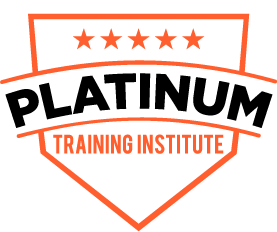Booking options
£450

£450
Get a 10% discount on your first order when you use this promo code at checkout: MAY24BAN3X
On-Demand course
Intermediate level
Specializing in sports performance training with NASM will help enhance not only your clients’ performance but also your earning potential.
With NASM’s Performance Enhancement Specialization (NASM-PES), you’ll learn how to provide cutting-edge strength and conditioning training for your clients. You’ll gain the advanced knowledge, insight, and skills needed to help clients of all levels reach their peak performance potential.
The 16 modules in this program will also help you meet the demands necessary of a Sports Performance Professional at all levels of sport by providing you the tools you need to improve your clients’ speed, agility, quickness, lifting, and more.
Pre-requisites:
Although it is not required, it is recommended that candidates have at least one of the following credentials:
NASM-CPT certification
Certified Sports Nutrition Coach
Certified Massage Therapist
NCCA, NBFE or DETC Accredited Health/Fitness Certification
4-Year College Degree
REPs Level 3 or higher (int’l)
What You Will Learn:
Section 1: Anatomy and Physiology for Sport
Chapter 1: Integrated Training Essentials
The student will be able to identify the principles of integrated training and explain the components, scientific rationale, and evidence.
Chapter 2: Science of Human Movement
Identify key biomechanical terminology and topics, and explain functional anatomy as it relates to integrated sports performance training.
Section 2: Sport Performance Testing, Integrated Training and Programming
Chapter 3: Testing in Sports Performance
Describe the components and function of an integrated sports performance assessment, and identify methods for determining athlete readiness to perform.
Chapter 4: Flexibility Training Concepts
Explain the scientific rationale for the use of an integrated flexibility-training program.
Chapter 5: Metabolic Energy System Training
Differentiate between aerobic and anaerobic energy systems and describe the importance of the role of the metabolic energy system training in improving sports performance.
Chapter 6: Core Training Concept
Explain the importance of the core musculature and its relationship to performance enhancement.
Chapter 7: Balance Training Concepts
Describe the role of balance training in improving sports performance and injury prevention.
Chapter 8: Plyometric Training Concepts
Describe plyometric techniques and their purpose in performance enhancement and injury prevention.
Chapter 9: Speed, Agility, and Quickness Training
Understand speed, agility, and quickness (SAQ) techniques and their purpose in performance enhancement and injury prevention.
Chapter 10: Resistance Training Concepts
Describe the role of resistance training in improving sports performance and identify the stages of the General Adaptation Syndrome.
Chapter 12: The Science of Periodization of the OPT™ Model
Identify the acute training variables within the Optimum Performance Training® (OPT™) model.
Section 3: Olympic Lifting and Injury Prevention
Chapter 11: Olympic Lifting for Performance Enhancement
Explain the rationale for the use of the Olympic lifts in improving performance.
Chapter 13: Injury Prevention for the Athlete
Identify strategies for injury prevention and common injuries related to physical activity.
Section 4: Sport Nutrition and Psychology
Chapter 14: Performance Nutrition
Explain the limits of nutritional advice under the scope of practice, and describe pre- and post-exercise nutrition strategies.
Chapter 15: Ergogenic Aids
Identify common substances used to enhance performance, ergogenic foods, and analyze ethical and legal issues related to the use of ergogenic aids.
Chapter 16: Psychology in Sports Performance
Explain performance psychology and its role in achieving athletic excellence.
Final Exam:
After the completion of the course, you will take an online final exam from the comfort of your own home, or wherever you prefer to take tests, that consists of 100 questions. Each question will be multiple-choice. The exam is timed and cannot exceed 90 minutes. To pass, you need a score of 70% or higher. Don’t fret though, if you score below that, you have up to 3 attempts to pass.
You will have 1 year (365 days) days from the date of enrollment.
Once you pass your final exam, your NASM-PES never expires and does not require you to renew.
While a Personal Training Certification is suggested, it is not required to take the NASM-PES course. To participate, it is recommended you hold a CPT, accredited health or fitness certification, a 4-year college degree in a similar field, or be a current Certified Massage Therapist.
The final exam is administered online within your student portal. It consists of 100 multiple-choice questions and 90 minutes for completion.
NASM-PES is approved for Continuing Education Units (CEUs) by the following organizations:
NASM – 1.9 CEUs
ACE – 2.0 CECs
